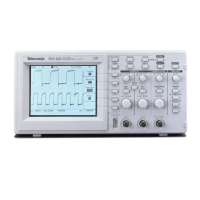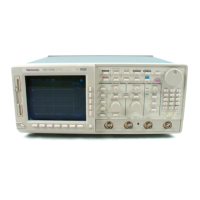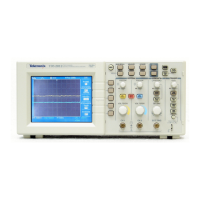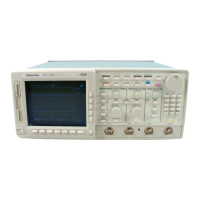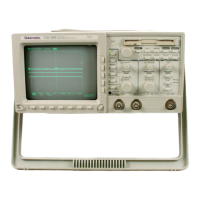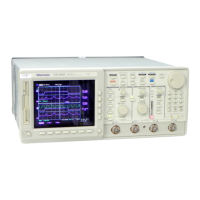Fast Fourier Transforms
3–36
TDS 420A, TDS 430A, TDS 460A & TDS 510A User Manual
If the pulse is repetitive, Average mode may be used to reduce noise in the signal
at a cost of slower display response. However, averaging does affect the
frequency response of the source waveform.
Do not use Peak Detect and Envelope mode. They can add significant distortion
to the FFT results.
Once you have your waveform displayed optimally, you may magnify (or
reduce) it vertically and horizontally to inspect any feature you desire. Just be
sure the FFT waveform is the selected waveform. Depending upon the record
length, FFT math waveforms may be zoomed or not.
Sin(x)/x interpolation may distort the magnitude and phase displays of the FFT
depending on which window was used. You can easily check the effects of the
interpolation by switching between sin(x)/x and linear interpolation and
observing the difference in measurement results on the display. If significant
differences occur, use linear interpolation.
Aliasing occurs when the oscilloscope acquires a source waveform with
frequency components outside of the frequency range for the current sample rate.
In the FFT waveform, the actual higher frequency components are under-
sampled, and therefore, they appear as lower frequency aliases that “fold back”
around the Nyquist point (see Figure 3–21).
The greatest frequency that can be input into any sampler without aliasing is
the sample frequency. Since source waveforms often have a fundamental
frequency that does not alias but have harmonic frequencies that do, use the
following methods to recognize and deal with aliases:
A source waveform with fast edge transition times creates many high
frequency harmonics.
Sample the source signal at rates that are at least 2X that of the highest
frequency component having significant amplitude.
Filter the input to bandwidth limit it to frequencies below that of the Nyquist
frequency.
Recognize and ignore the aliased frequencies.
If you think you have aliased frequencies in your FFT, select the source channel
and adjust the horizontal scale to increase the sample rate. Since you increase the
Nyquist frequency as you increase the sample rate, the alias signals should
appear at their proper frequency.
Zoom and Interpolation
Undersampling (Aliasing)
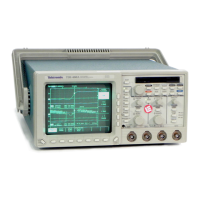
